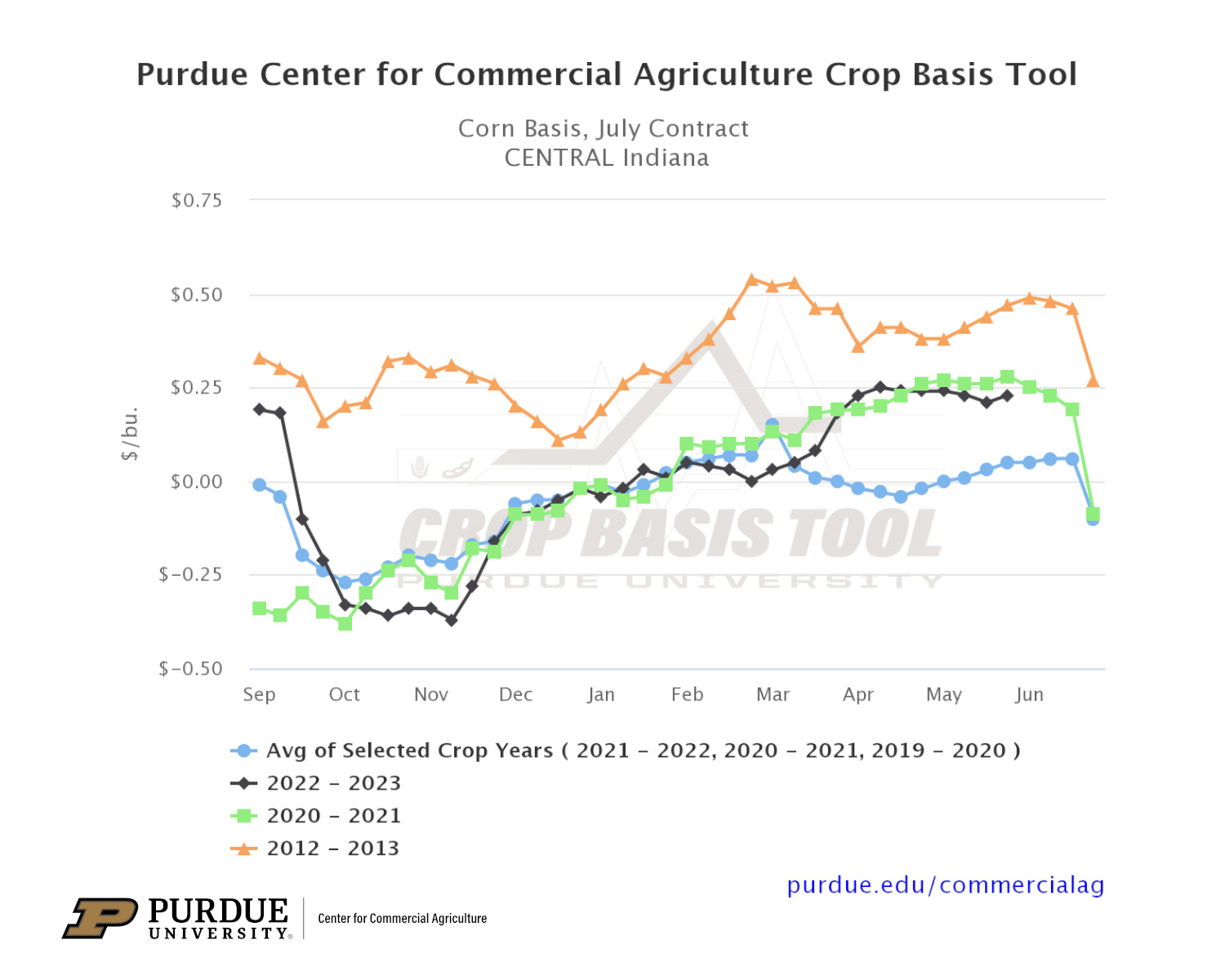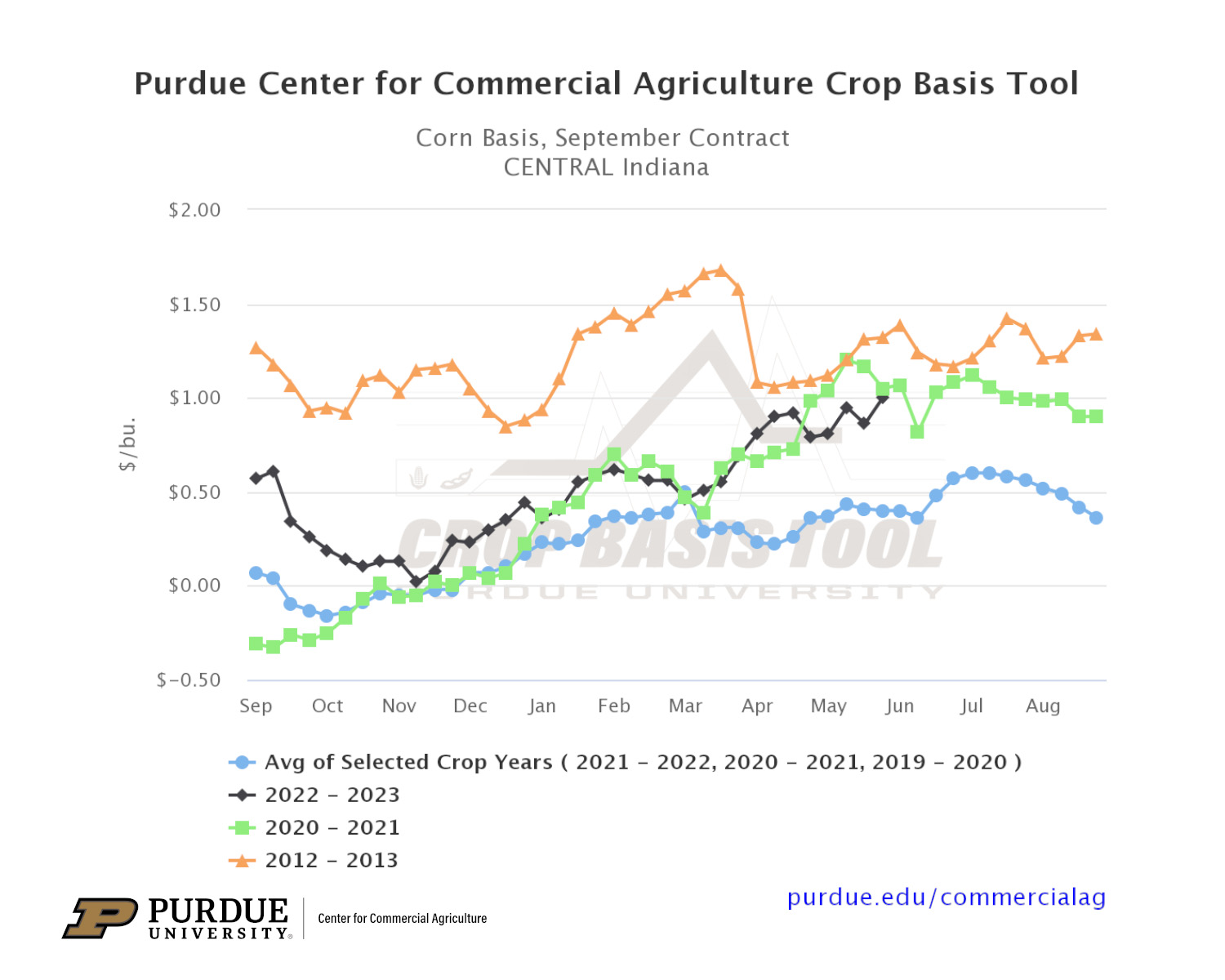June 1, 2023
Corn Basis Implications from July-September Futures and Weather Conditions
by Nathanael Thompson
Corn and soybean basis has been relatively steady in recent weeks in most regions of the eastern Corn Belt. At the end of April James Mintert and I discussed the inversion in old crop corn futures contracts and the impact on basis and old crop marketing. See our conversation here. As anticipated, July ’22 corn futures have strengthened relative to September ’22 corn futures since the May ’22 corn futures contract went off the board. Corn basis has also remained very strong in many regions in the eastern Corn Belt. However, as we discussed in our conversation in April, attention now shifts to the July-September corn futures price spread, which has a strong inversion—September trading for $0.73/bu. less than July. How will this impact basis patterns for the remainder of the summer?
If we look at recent years with an inversion in the July-September corn futures spread, we find 2013—following the 2012 drought—and 2021—following increases in Chinese export demand. Looking at the basis patterns in these two years indicates that basis relative to July futures (Figure 1) will likely weaken in the coming weeks as we approach expiration of the July futures contract and basis relative to September futures is likely to remain strong (Figure 2).
However, weather in the coming weeks could impact both futures price spreads and basis patterns. If hot and dry conditions continue in the Midwest, we would expect to see the spread between July and September corn futures to narrow and basis to likely strengthen at locations that need corn this summer. However, if weather is favorable and crop conditions remain good, then this spread is likely to remain wide and basis will likely follow its seasonal pattern steadily weakening as we approach harvest in the Fall of 2023. Be sure to check out these basis patterns in your local market using the Purdue Center for Commercial Agriculture’s new and improved Crop Basis Tool.
TAGS:
TEAM LINKS:
RELATED RESOURCES
UPCOMING EVENTS
December 1 & 8, 2025
Join Purdue Extension for a two-part workshop designed to help you gain a clearer understanding of tax planning essentials. The first session on December 1 will focus on the fundamentals of farm taxes, with particular emphasis on strategies that can be used in a low net income year. The second session on December 8 will focus on key tax strategies and will allow plenty of time for questions. Registration cost is only $20.
Read MoreDecember 15, 2025
This program provides in-depth coverage of agricultural and farm tax issues. In addition to covering timely tax issues, we will cover disaster tax issues, depreciation and expensing farm assets, retirement planning for farms, and tax planning in low-income years. This year’s webinar will be co-taught by a team from Ohio State and Purdue Universities.
Read MoreJanuary 27 or 28, 2026
Farm Shield is more than a conference, it’s a commitment to helping agricultural families build resilience and plan for a secure future. Don’t miss this opportunity to protect your legacy!
Read More

